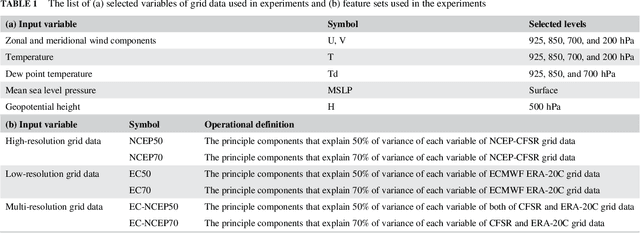Lee-Yaw Lin
Identification of synoptic weather types over Taiwan area with multiple classifiers
May 21, 2019



Abstract:In this study, a novel machine learning approach was used to classify three types of synoptic weather events in Taiwan area from 2001 to 2010. We used reanalysis data with three machine learning algorithms to recognize weather systems and evaluated their performance. Overall, the classifiers successfully identified 52-83% of weather events (hit rate), which is higher than the performance of traditional objective methods. The results showed that the machine learning approach gave low false alarm rate in general, while the support vector machine (SVM) with more principal components of reanalysis data had higher hit rate on all tested weather events. The sensitivity tests of grid data resolution indicated that the differences between the high- and low-resolution datasets are limited, which implied that the proposed method can achieve reasonable performance in weather forecasting with minimal resources. By identifying daily weather systems in historical reanalysis data, this method can be used to study long-term weather changes, to monitor climatological-scale variations, and to provide a better estimate of climate projections. Furthermore, this method can also serve as an alternative to model output statistics and potentially be used for synoptic weather forecasting.
* journal article, open access
 Add to Chrome
Add to Chrome Add to Firefox
Add to Firefox Add to Edge
Add to Edge